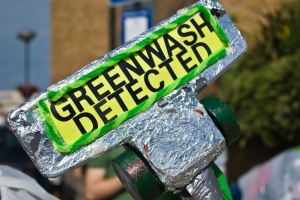Jan 26
20121
350.org / 1Sky, Natural Resources Defense Council, Non-Profit Industrial Complex
Greenwash Keystone XL Natural Resources Defense Council (NRDC) Obama Subsidies Tar Sands Action Tides Foundation
Keystone XL Theatre | Why did Obama Choose NRDC Founder John Bryson as his Commerce Secretary?
Published January 26, 2012 by Political Context
By Cory Morningstar

“The ability to deal with people is as purchasable a commodity as sugar or coffee and I will pay more for that ability than for any other under the sun.” – David Rockefeller, the current patriarch of the Rockefeller family
As 350.org/1Sky/Tar Sands Action Coalition continue to fill the self-proclaimed “progressive media” airwaves with self-congratulatory articles of strategic grassroots efforts and so-called victories, many are aware of the fact that a key player collaborating with the “Tar Sands Action” coalition is the NRDC (Natural Resources Defence Council). Forgetting for a moment the beginnings and correlation between 350.org/1Sky, the Rockefellers, the Clintons and big business, what other ties to the very industry and administration could these “environmental groups” such as NRDC behold? One such revelation known to few is the fact that NRDC’s John Bryson was confirmed as Barack Obama‘s Commerce Secretary on 20 October 2011. Who nominated Bryson to fill this position? President Barack Obama himself nominated Bryson as Secretary of Commerce on 31 May 2011. Obama’s nomination was endorsed by key corporate players including the U.S. Chamber of Commerce.
Bryson co-founded NRDC in 1970 by way of a $400,000 grant, courtesy of the Ford Foundation. Bryson has served on the United Nations Secretary-General’s Advisory Group on Energy and Climate Change alongside other elite associates of powerful corporations such as Tata (India) and ESKOM Holdings (South Africa). (And as Rio+20 will prove, the United Nations has become as corrupt an institution as the nations that control it; an instrumental tool for serving the world’s powerful oligarchy. It is nothing less than a Greek Tragedy that it has taken 20 years to figure this out – a further tragedy being that we citizens still delude ourselves that we can influence these negotiations, in any meaningful way. We cling to denial, our fingers blue, eyes wide shut. [1])



 Several years ago three U.S. companies sank millions of dollars into a forest reserve in southern Brazil to earn credits to cover some of their carbon emissions back in America. How does the scheme work on the ground? Michael Montgomery reports in collaboration with Mark Schapiro.
Several years ago three U.S. companies sank millions of dollars into a forest reserve in southern Brazil to earn credits to cover some of their carbon emissions back in America. How does the scheme work on the ground? Michael Montgomery reports in collaboration with Mark Schapiro.
 A green police trooper rides a boat in Brazil.
A green police trooper rides a boat in Brazil. Guarani tribal leader Leonardo Wera Tupa
Guarani tribal leader Leonardo Wera Tupa